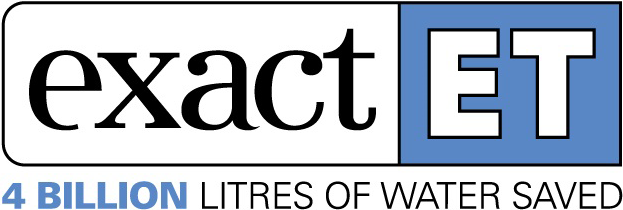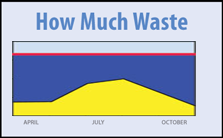Drought Fears Loom in Alberta
Bone-dry winter sparks dire conditions
Alberta is facing one of its driest years on record due to low precipitation and snowpack levels that could force severe water restrictions and devastate farmland if the situation doesn't improve.
The tinder-dry conditions are also contributing to four times the normal number of wildfires and have seen the Alberta government already burn through its $90-million firefighting fund.
With fire bans and water restrictions already in some areas, the Stelmach government is urging Albertans to conserve water and warning the situation could prove dire if rainfall levels don't improve.
"We are getting into one of the driest years on record -- perhaps," Premier Ed Stelmach said Tuesday in question period at the legislature. "To those in the agriculture industry, obviously concern. We haven't lost a crop as of yet in April ever in my memory, but we have to be careful as we proceed."
Speaking later to reporters, the premier said he's "very concerned," noting there's been very little run-off, pastures have been grazed considerably and dugouts are quite low.
Stelmach noted he just returned from Jasper, where he noticed creeks are flowing at minimal levels he hasn't seen in "many, many years."
The situation is troubling across the province, especially in parched southern Alberta. Weather maps reveal that winter precipitation levels across almost every corner of the province were "much below normal." Furthermore, large chunks of the western half of the province have seen minimal or no precipitation in April.
In southern Alberta, the Bow River basin is considered "below to much below average" in the Banff-Kananaskis area, and much below average in the Elbow and Highwood River basins -- ranking second-to eighth-lowest in the past 20 to 40 years, say provincial officials.
Large parts of the Oldman River basin are also below to much below average. And the Red Deer, North Saskatchewan and Athabasca River basins are near average in the mountains, but below to much below average in the foothills. What's more, provincial reservoirs are "generally pretty low," said Cara Tobin with Alberta Environment.
The drought conditions, if they don't improve, could easily force municipalities and irrigation districts to enforce water restrictions on homeowners, golf courses, farmers and businesses, she said.
"A lot of us are crossing our fingers that we will get that rain," Tobin said, explaining government will be aggressively storing water earlier in the year. "We are taking some steps to accommodate what we anticipate will be a very dry summer."
Heather Smith, who ranches with her husband Ted in southwest Alberta near highways 22 and 3, said conditions are the worst they've seen in some time.
There's almost no ground moisture, she said, and a continued lack of precipitation means cattle can't graze as heavily, driving up feed costs for farmers. Hay crops have also suffered since last year, Smith said, hoping Mother Nature will finally deliver a reprieve.
"It's really horribly dry. It's just terrible," she said. "It will be a disaster."
In Wheatland County east of Calgary, the situation is worrisome but not as desperate following a massive snowfall last week that walloped large parts of eastern Alberta.
Reeve Ben Armstrong said moisture levels are better in the short term due to the snowstorm, but a dry spring could see an explosion of pesky, crop-destroying grasshoppers. Large parts of the county are dryland farming and rely exclusively on rainfall.
"There is a concern about the weather," Armstrong said, noting the county was under a drought watch last year.
Liberal Leader David Swann said the looming water shortages demand the Stelmach government finally implement a water management plan that's been in the works for a couple of years.
"This is shaping up to be one of the worst droughts in years," Swann said Tuesday, arguing such a strategy must focus on conservation and storage. "I'm concerned that this government will continue with its fire-ready-aim philosophy, simply reacting to crisis instead of planning for it."
He called the province's "first-in-time, first-in-right" water strategy -- which gives the oldest water licence holders first dibs -- an "antiquated" approach that steals power from Albertans to control their own resource.
Environment Minister Rob Renner countered in question period that the government will release a water management plan later this year that will respect water rights but allow for economic and population growth.
In the meantime, the premier said all Albertans must do their part to not only conserve water, but also help prevent human-induced wildfires that are already scorching large sections of forest.
Since April 1, there have been 241 wildfires in Alberta -- four times the normal amount. The provincial government has already allocated its entire $90-million annual budget for fighting and preventing wildfires and, like most years, will have to tap the rainy-day Sustainability Fund for emergency dollars to battle any blazes that break out over the summer.
"Now is not the time to start fires," Stelmach said Tuesday. "I ask all Albertans to pay close attention."


